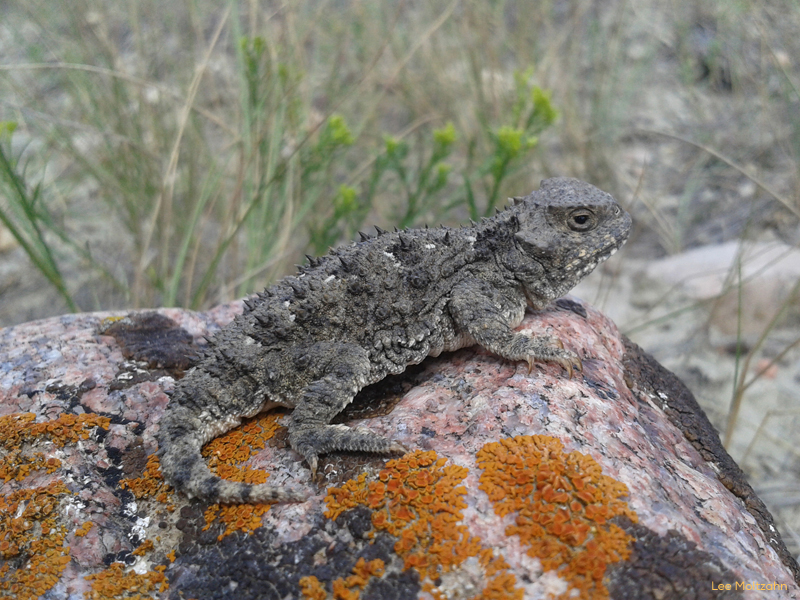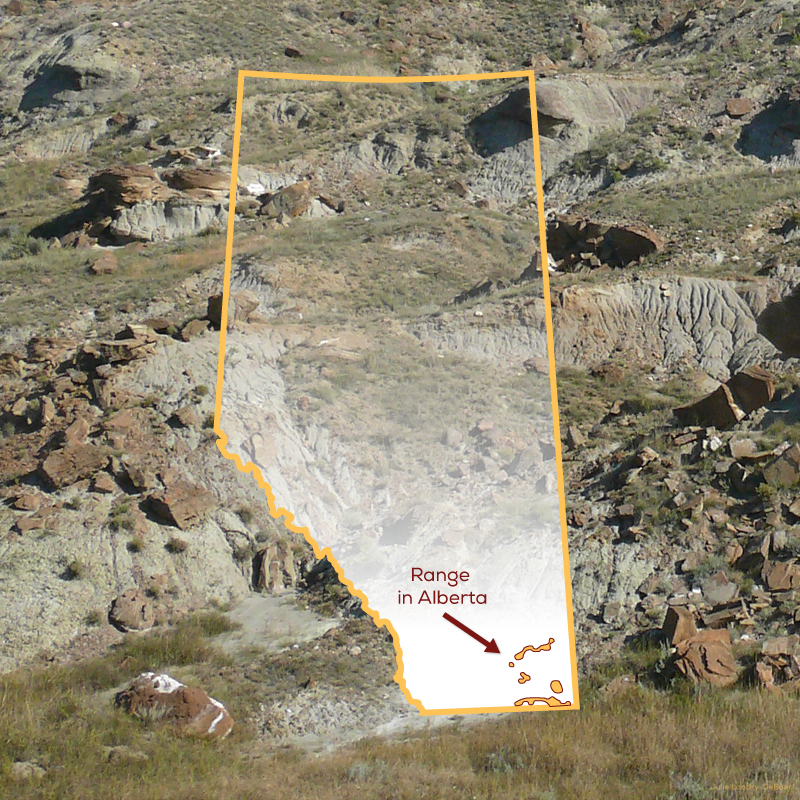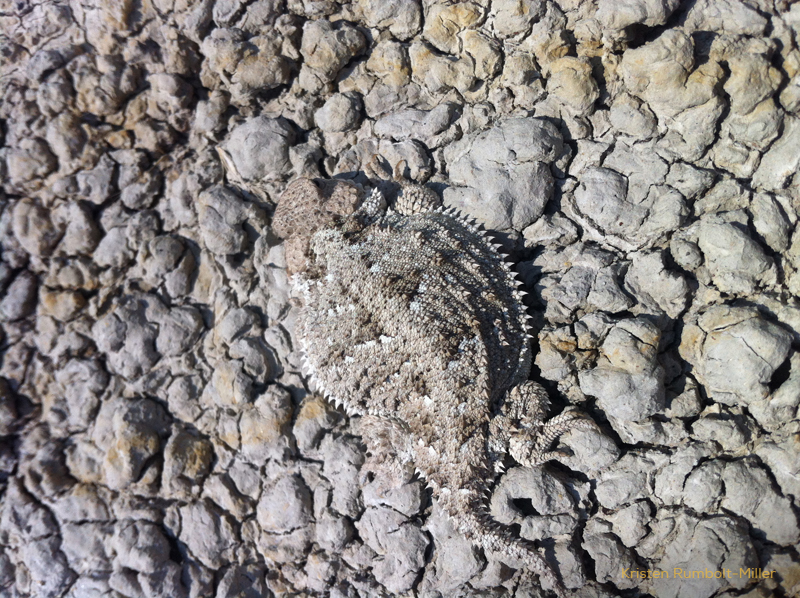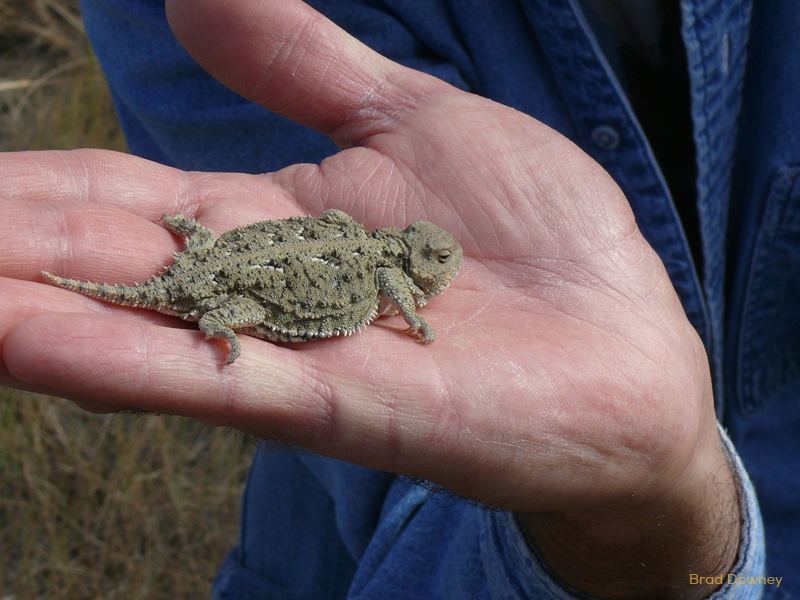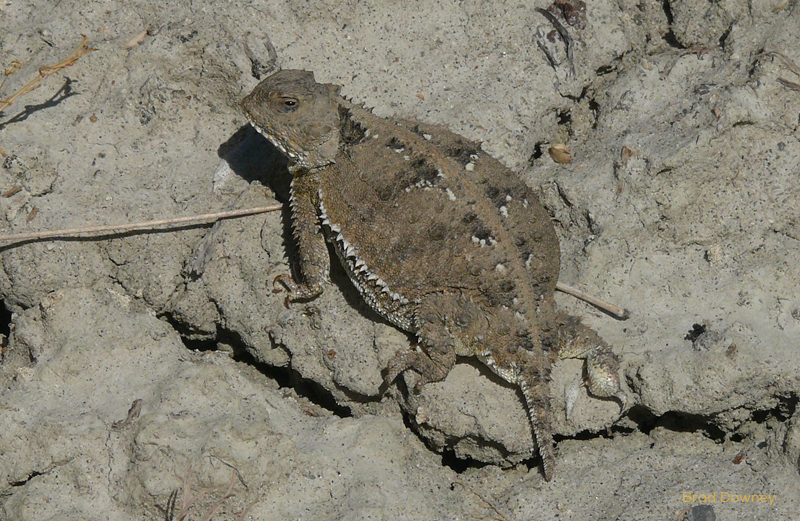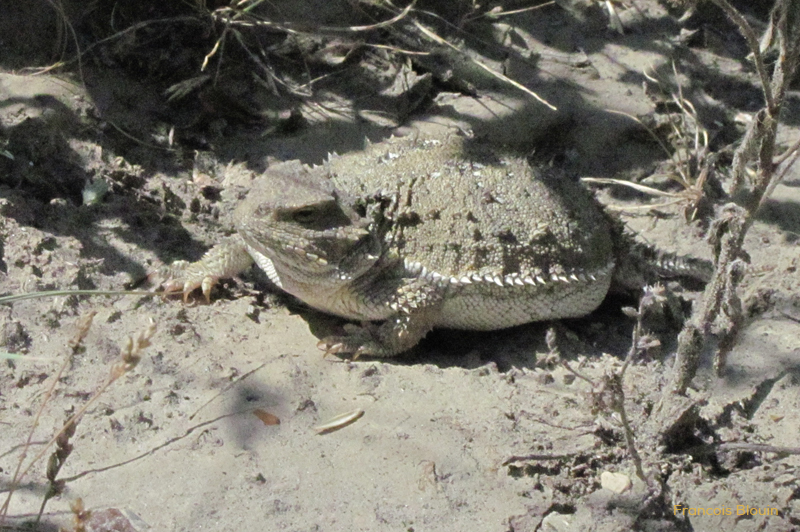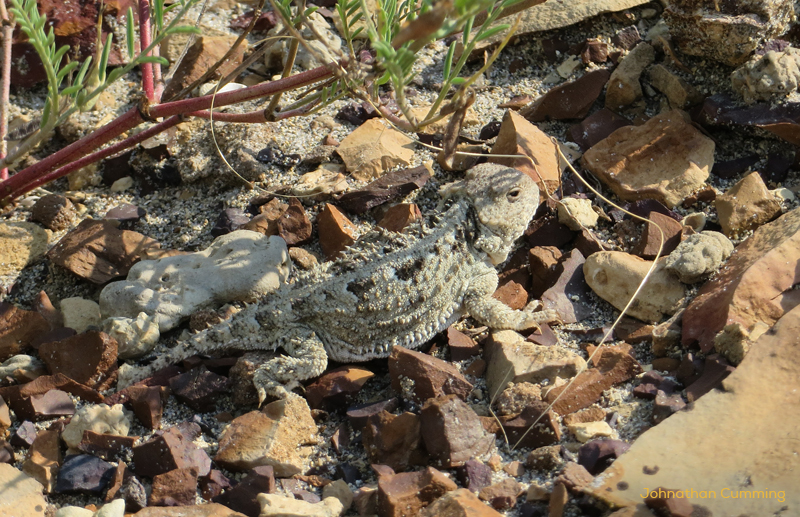SHORT-HORNED LIZARD
Phrynosoma hernandesi
Habitat:
On, above and below sparsely vegetated and actively eroding slopes along arid coulees and canyons.
Teeny Tiny Lizards
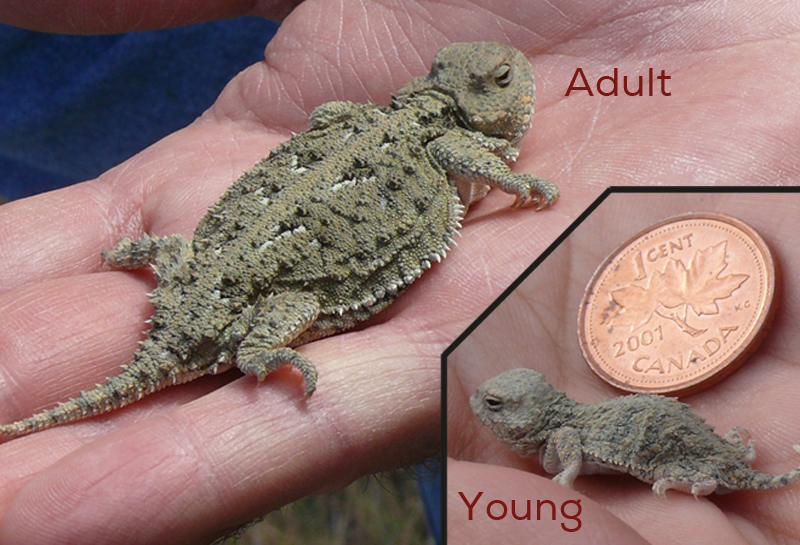
In Alberta, Short-horned Lizards are very small – only 50-70mm long – they can easily fit on a credit card. Their live-born young are only about the size of a penny.
Ant Eaters
Short-horned Lizards are one of the few animals that eat ants. They also munch on grasshoppers, beetles, moths and other insects.
Survival by Camo
Lizards use camouflage to hide very effectively from their predators (and scientists!). Their mottled sandy colour and spines ensure that they blend in very well with their rocky habitats. Predators include owls, hawks, snakes and coyotes.
Population
The size of the population of Short-horned Lizards is unknown, although local populations have declined because of habitat loss and disturbance.
Current Threats
- Habitat degradation and fragmentation by reservoir creation as well as industrial and urban expansion.
- Oil and gas activity is one of the main disturbances of Short-horned Lizard habitat in Alberta. The associated gravel road network, which is attractive to the species, contributes to road mortality.
- Small, isolated and sparsely distributed sub-populations makes them vulnerable to extirpation from localized disturbance or climatic events.
- Cold periods with no snow cover can hamper their winter survival and extended periods of drought can reduce their prey populations.
Species@Risk Quiz
Test your knowledge about Alberta’s grassland species at risk
Short-Horned Lizard
Question 1 |
Short-horned Lizards prefer to live in areas with little vegetation because:
Their short legs make it difficult to walk through dense vegetation | |
They can easily see their predators | |
They are less likely to be disturbed by cattle |
Question 2 |
Short-horned Lizards are just a little bit smaller than a:
Dime | |
Brick | |
Credit Card |
Question 3 |
Short-horned Lizards spend the winter:
In Mexico | |
Nestled into snow banks | |
Hibernating in shallow burrows that they have dug themselves. |
Question 4 |
Short-horned Lizards main diet consists of:
Grass and seeds | |
Ants, grasshoppers and other insects | |
Frogs and mice |
Public
- Avoid using motorized off-road vehicles in Short-horned Lizard habitat.
- Don’t capture Short-horned Lizards to use as pets as they don’t survive in captivity and it is illegal.
- Support native grassland habitat by choosing grass-fed meat in the grocery store.
- Voice your support for native grassland conservation with your political leaders.
- Educate yourselves and your family about Short-horned Lizards and their role in the grassland ecosystem.
Landowners
- If you think you have lizards on your land, consult with a biologist who can help you confirm their presence.
- Limit physical disturbances in areas known to contain Short-horned Lizards.
- Limit pesticide use in areas adjacent to Short-horned Lizard habitat.
- Steer oil and gas activity at least 200m away from coulees and valley edges where Short-horned Lizard habitat is known to exist.
- Talk to your children and neighbours about the privilege of having this unique animal on your land.
What MULTISAR Does
- Develops habitat conservation strategies and conducts surveys and monitoring of Short-horned Lizard populations with collaborating ranchers.
- Provides recommendations to landowners to manage rangelands in a way that minimizes impact on lizard habitat.
- Provides information about the species and recommendations to minimize the impact of industrial development.
